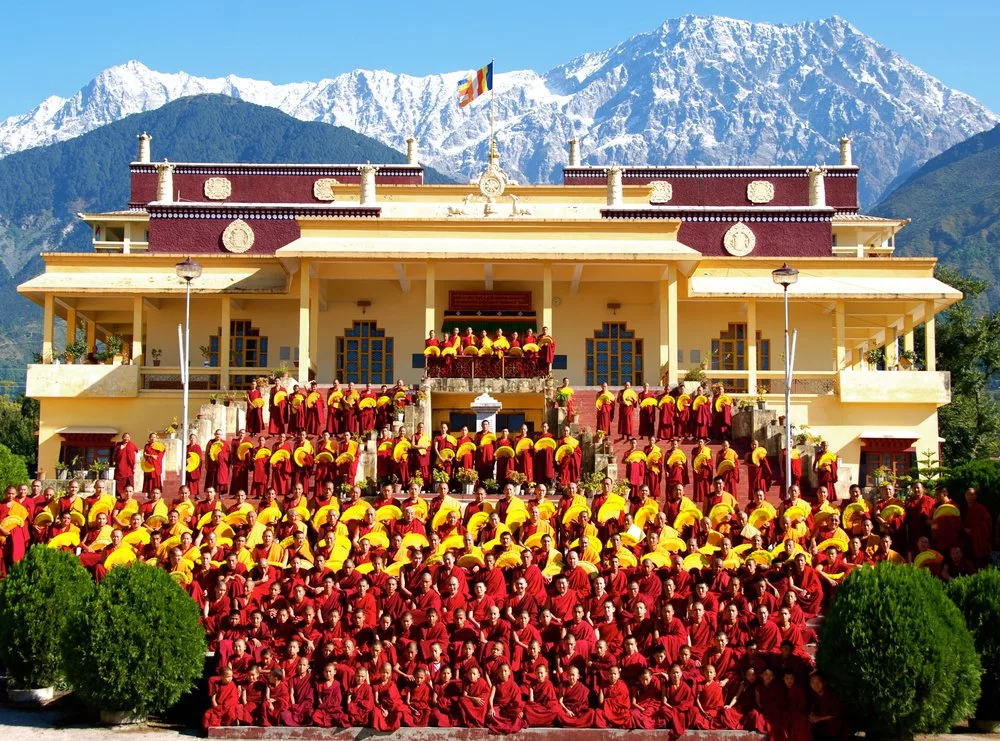The history of the Dalai Lamas covers more than 500 years. It is full of power struggles, magic, religious rivalry, and strategic moves. It is the Tibetan Plateau’s version of “The Game of Thrones” which has seen 14 different Lamas ascend the throne.
What is the Dalai Lama of Tibet?
“Dalai Lama” is the title of the highest-ranking lama of the Gelug school, as well as the head of monks and nuns of Tibetan Buddhism.
The Dalai Lama traditionally has been responsible for the governing of Tibet, until the Chinese communist party invaded and took control in 1959. Before the occupation of Tibet, the Dalai Lama’s official residence was Potala Palace in Lhasa, the capital of Tibet.
The institution of the Dalai Lama is a relatively recent one. There have been only 14 Dalai Lamas in the history of Buddhism, and the first and second Dalai Lamas were given the title posthumously (after death).
The title Dalai Lama means Ocean of Wisdom in Tibetan. It was not until the third Dalai Lama’s reincarnation in the form of Sonam Gyatso in 1578 that the title Dalai Lama was popularized.
The Dalai Lamas are believed by Tibetan Buddhists to be manifestations of Avalokiteshvara or Chenrezig, the Bodhisattva of Compassion and the patron saint of Tibet. Bodhisattvas are enlightened beings, inspired by the wish to attain complete enlightenment, who have vowed to be reborn in the world to help all living beings.
The First Dalai Lama Gedun Drupa
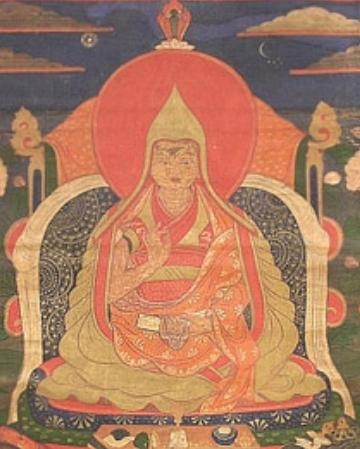
The First Dalai Lama, Gedun Drupa, was born in 1391 in Gyurmey Rupa, near Sakya in the Tsang region of central Tibet to a nomadic family. His given name was Pema Dorjee.
The young Gedun Drupa was aware of the fame of the Great Tsongkhapa, the founder of the Gelugpa School and he became his disciple in 1416.
The Second Dalai Lama Gedun Gyatso
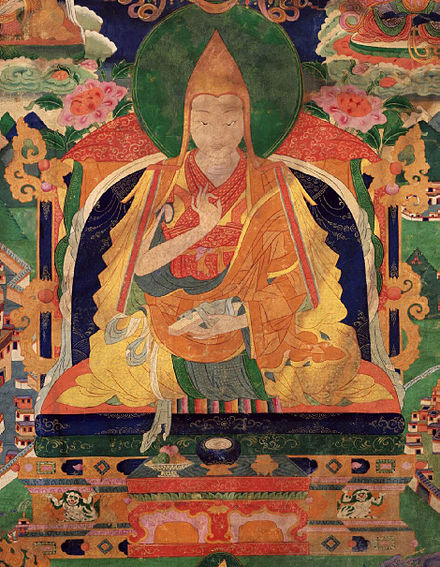
He was born near Shigatse, the second biggest city in Tibet. His father was a Tibetan Yogi of Nyingma Lineage. He was recognized as the reincarnation of the previous Dalai Lama at a young age, and enthroned at the age of 11.
He was head of the Gelugpa Lineage, and later became abbot of the largest Gelugpa monastery, Drepung. His Seat remained at the Drepung Monastery until his death.
Gedun Gyatso died deep in meditation at the age of 67 in 1542.
The Third Dalai Lama Sonam Gyatso
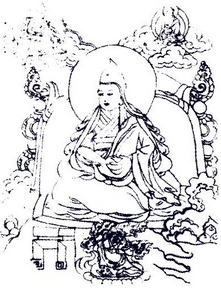
The Third Dalai Lama, Sonam Gyatso. He converted the Mongol leader Altan Khan to Buddhism. It is commonly believed that Altan Khan originated the title Dalai Lama, meaning “Ocean of Wisdom,” in 1578 to give to Sonam Gyatso. Others point out that since Gyatso is Tibetan for “ocean,” the title “Dalai Lama” simply might have been a Mongol translation of Sonam Gyatso’s name—Lama Gyatso.
The Fourth Dalai Lama Yonten Gyatso
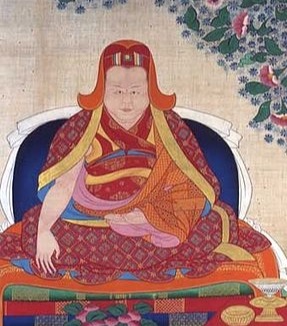
Yonten Gyatso was of Mongolian origin. He was enthroned at the age of 10 in Lhasa, the capital of Tibet. There was some controversy for him being non-Tibetan which led to opposition for some Tibetans.
The Fourth Dalai Lama, Yonten Gyatso, died under suspicious circumstances at the age of 27.
The Fifth Dalai Lama Lobsang Gyatso
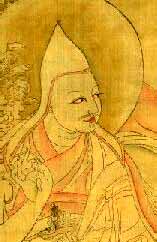
He was highly educated in history, classical Indian poetry, and Sanskrit. It was the 5th Dalai Lama, Lobsang Gyatso (1617-1682), who first became the spiritual and political leader of all Tibet. The “Great Fifth” formed a military alliance with the Mongol leader Gushri Khan.
During the Fifth Dalai Lama Tibet saw a great cultural development. It is during his reign the Potala Palace was built.
The Fifth Dalai Lama died in 1682, and his death was kept secret for fifteen years by his regent Desi Sangye Gyatso.
The Sixth Dalai Lama Tsangyang Gyatso

The Sixth Dalai Lama was born in 1683 in southern Tibet (which is now in India). He was located at the Urgelling Monastery at the age of 13. He was a true Tibetan yogi, who grew his hair long, dressed as a regular layman, and also broke some rules of an ordained monk such as drinking alcohol or having sexual relationships.
He was a true artist renowned for his poetry and songwriting. Rebellious by nature, he was against many rules that he enforced as the leader of the Gelugpa School.
The Sixth Dalai Lama’s reign was difficult because of the power struggle between Qing China, Mongols, and Tibet. He was kidnapped by Mongol forces and assumed murdered in 1706.
The Seventh Dalai Lama Kelsang Gyatso

He was born in present-day Sichuan Province in 1708. He was recognized as the reincarnation of the previous Dalai Lama at the age of 12.
The Seventh Dalai Lama took the novice monk vows in 1720, and later fully ordained as a Buddhist monk. He was a highly educated scholar, a prolific writer, and a poet.
He founded the Tse-School in 1753, and built the new palace of Norling Kalsang Phodrang at Norbulingka also know as the summer palace.
According to many scholars, despite living through such violent times Kelzang Gyatso was perhaps the most spiritually learned and accomplished of any Dalai Lama, his written works comprising several hundred titles including some of Tibet’s finest spiritual literary achievements.
The seventh Dalai Lama himself established the Tibetan government that was ruling Tibet successfully for over 200 years until China’s invasion in the late 1950’s.
The Eighth Dalai Lama Jamphel Gyatso
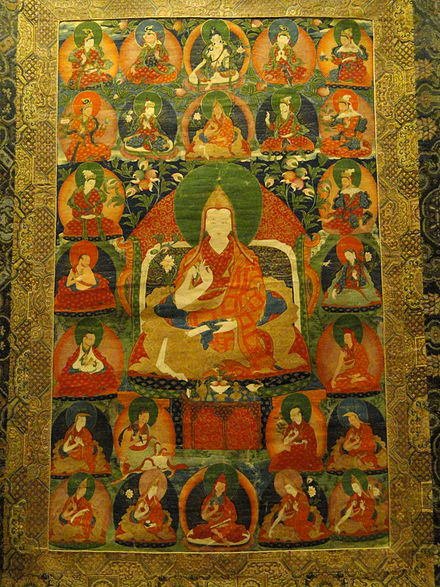
He was born in 1758, and at the age of 5 was enthroned as The Eighth Dalai Lama. At the age of 23, he became the ruler of Tibet.
After 4 years of ruling the country, Jamphel Gyatso decided to retire and fully concentrate on spirituality. He was fully involved with religious activities (ordaining monks and fostering monasticism) for the next 16 years until his death in 1804.
The Ninth Dalai Lama Lungtok Gyatso
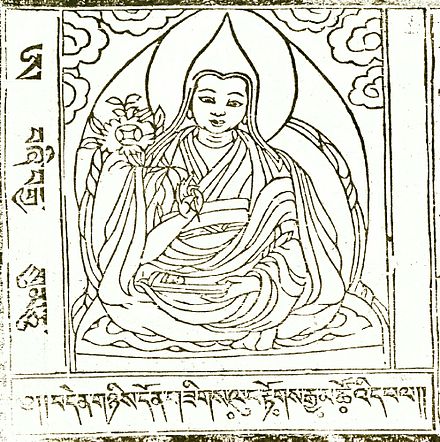
He was discovered by the Panchen Lama as the reincarnation of the previous Dalai Lama at the age of 2 and enthroned in Potala Palace at the age of 3.
The Ninth Dalai Lama died at the age of 9 from pneumonia.
His regent was Regent Demo Tulku.
The Tenth Dalai Lama Tsultrim Gyatso
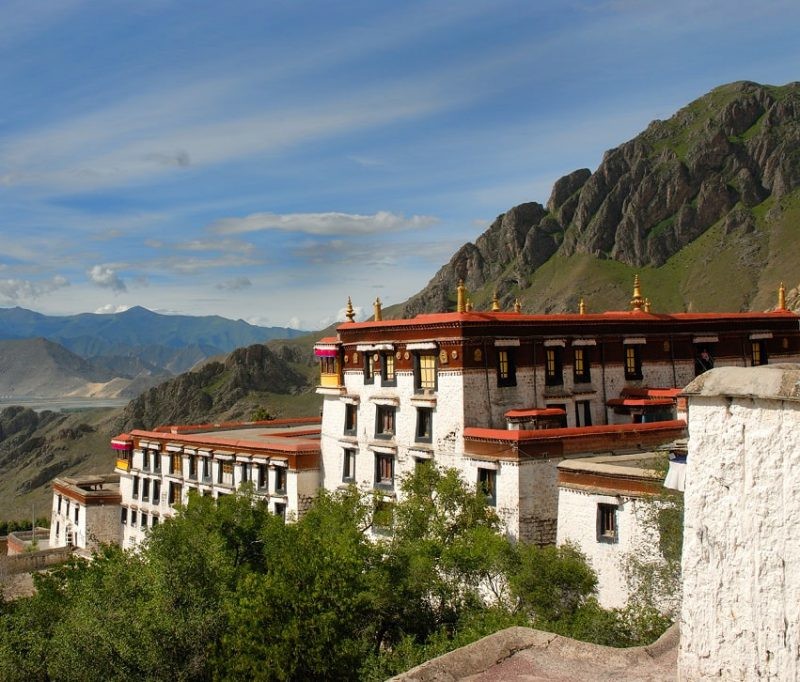
Five years passed between the death of the previous Dalai Lama, and the discovery of the new reincarnation.
The Tenth Dalai Lama was born in 1816 in the Kham Province of Tibet and enthroned in 1822 in Lhasa. He studied at Drepung Monastery where he had many tutors in sutra and tantra studies.
In 1830 he became the ruler of Tibet but mysteriously died several years later at age of 22. No portraits of this Dalai Lama exist.
The Eleventh Dalai Lama Khedrup Gyatso
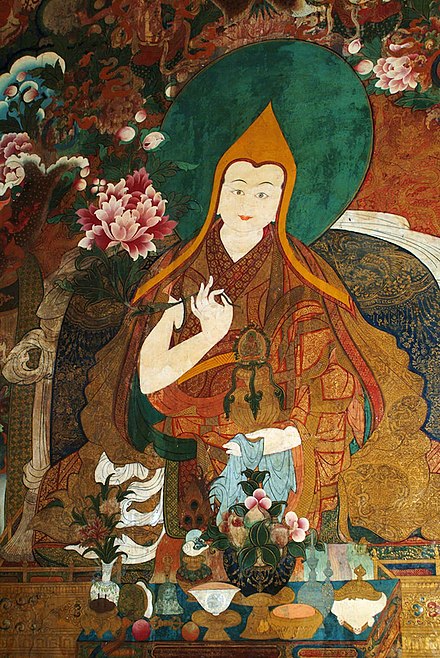
He was born in 1838 and enthroned at the age of 4. He was studying along with the Panchen Lama (who was similar age).
There was an ongoing power struggle for seven decades before his reign, which makes the sudden deaths of the previous Dalai Lamas even more suspicious.
The Eleventh Dalai Lama became a ruler of Tibet at the age of 17 and died just 11 months later.
The Twelfth Dalai Lama Trinley Gyatso
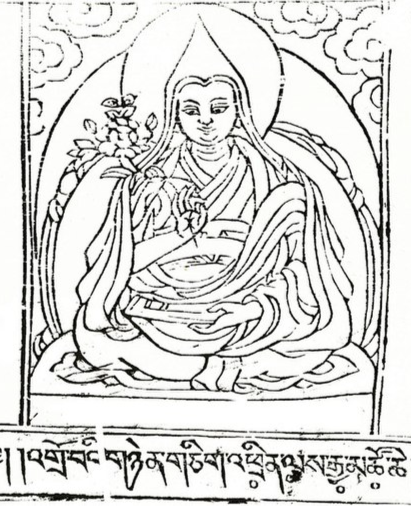
The Twelfth Dalai Lama was born in 1857 followed by the usual extraordinary signs (see reincarnation). He was recognized at the age of 2 and became the ruler of Tibet at the age of 17.
During his reign, Europeans were banned from entering the country.
Just as previous Dalai Lamas he died young under suspicious circumstances.
The Thirteenth Dalai Lama Thupten Gyatso
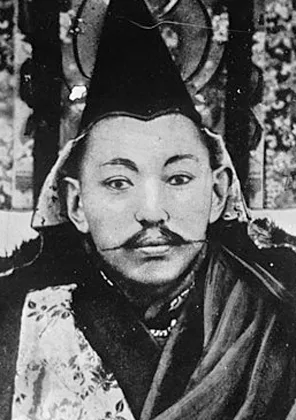
Born in 1876, recognized at the age of 2, and enthroned a couple of years later. He became a political ruler of Tibet at the age of 19.
His tutor was a Russian-born Agvan Dorzhiev. Agvan Dorzhiev convinced the Thirteenth Dalai Lama to escape Tibet in 1904 due to British Invasion. He was also involved in the anti-foreign 1905 Tibetan Rebellion which caused extreme anti-Chinese sentiment among Tibetan Buddhists.
The Thirteenth Dalai Lama returned to Tibet in 1908 but had to escape again in 1910 due to China’s military expedition to Tibet. He returned to Lhasa in 1913.
He is most famous for redeclaring Tibetan Independent, restoring discipline in monastic life, and making changes in the official structure of the ruling party. He is the one who declared independence from China, standardized the Tibetan Flag, and issued the first banknotes. A secular education system was introduced in addition to the religious education system.
He was the first Dalai Lama that became part of international politics, and was aware of the importance of international relations. He could speak Mongolian and understood some Russian, could read and write in Sanskrit.
The Thirteenth Dalai Lama’s position was that Tibet was never a part of China.
The Fourteenth Dalai Lama Tenzin Gyatso
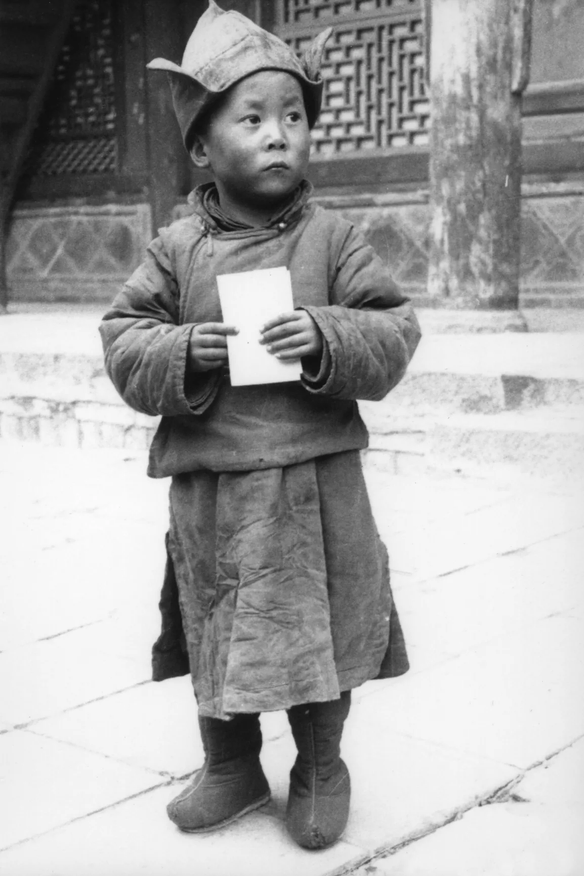
The Fourteenth Dalai Lama, Tenzin Gyatso was born on 6 July 1935 and recognized as the reincarnation of the previous Dalai Lama at the age of 2.
His education started at the age of 6. The main subjects included logic, poetry, drama, astrology, fine arts, Sanskrit grammar, medicine, and Buddhist philosophy.
In 1959 after the occupation of Tibet by the Chinese, the Dalai Lama had to escape Tibet. Since then he has been living in Dharamsala, northern India.
In 1989 he was awarded the Nobel Peace Prize for his non-violent struggle for the liberation of Tibet.
On 29 May 2011, His Holiness signed the document formally transferring his temporal authority to the democratically elected leader. In doing so he formally put an end to the 368-year old tradition of the Dalai Lamas functioning as both the spiritual and temporal head of Tibet.
Interestingly, Tenzin Gyatso (current Dalai Lama) has also expressed doubts over whether he will be reborn at all, suggesting the function of the Dalai Lama may be over. However, until Tibet is reunited with its spiritual leader, it seems likely that there will continue to be a Dalai Lama.
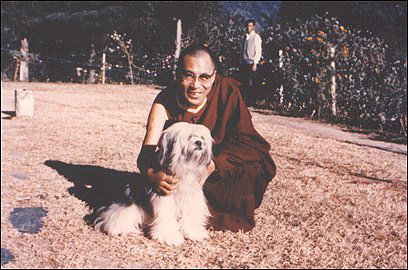
Thank you for reading 🙏
Did you like the article?
Click here to support 👉 https://www.buymeacoffee.com/buddhaland
“My Meditation Marathon” – the Mindfulness Journal on Kickstarter – support now.

